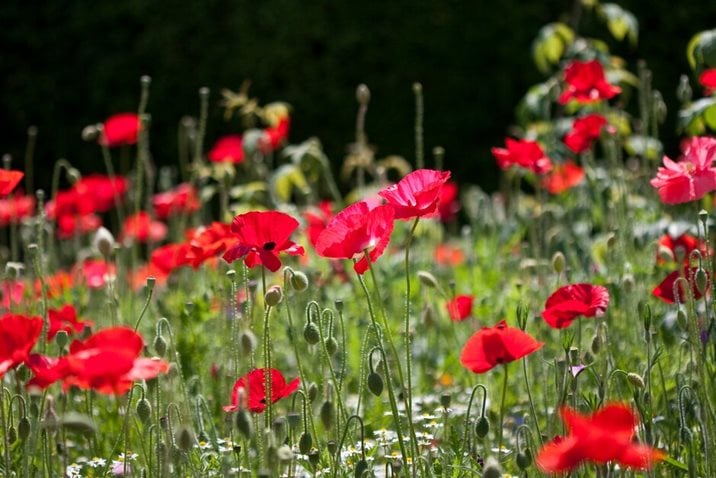How to sow a wildflower patch
Brighten up a spare area of ground by sowing wildflower seeds in spring or autumn. It’s quick and easy, and the resulting summer display will attract lots of pollinating insects.

Quick facts
- Most wildflowers, particularly cornfield annuals, need a sunny spot – but there are mixes available for light shade
- You can sow a wildflower patch in mid-spring (April) or early autumn (September)
- Minimal soil preparation is required
- Your wildflower patch can be as big or small as you like – you could even sow into containers if garden space is limited
Jump to
Getting started with your wildflower patch
Annual wildflower seeds are easy to sow in mid-spring or early autumn. There are many mixes available, with different blends of wildflowers, some of which include grasses for a meadow effect. For information on what is meant by ‘wildflower’, see our page on the use of the term wildflower in horticulture.
Make sure you buy enough seeds for the area you want to sow – check the seed packet for the sowing rate (usually in grammes per square metre) and measure up your site.
For a natural effect, it’s best to scatter (broadcast) the seeds rather than sowing in straight lines. The easiest way to get an even distribution is to mix the seeds with a small quantity of dry sand – you can then see where and how densely you’ve sown.
Tools you need to sow a wildflower patch
-
Annual wildflower or meadow seed mix
-
Fork
-
Rake
-
Small amount of dry sand
-
Bamboo canes
-
Garden hose or watering can
- Bird-proof netting,
biodegradable fleece
How to sow a wildflower patch in six simple steps
-
Cultivate the soil
Fork over the soil to loosen it, removing any weeds and big stones. Then rake the soil level.
-
Prepare for sowing
Mix your seeds with a few handfuls of dry sand to make it easier to scatter them evenly, and to clearly show where you've sown.
As a general guide, a pure wildflower mix is usually sown at about 2g per sq m, and a wildflower-and-grass mix at 5g per sq m. To help you sow at the recommended rate, use bamboo canes to divide up the site into metre squares. -
Sow your seeds
Divide your seed and sand mixture into two equal batches. Scatter the first, using a wrist flicking motion, up and down the whole area, aiming for similar coverage in each metre square, right to the edges. Then repeat with the second batch, this time working from side to side.
-
Firm down the seeds
Use the back of your rake to lightly press the seeds into the soil to ensure good germination, but take care not to bury them too deeply. If there is no rain forecast for a few days, gently water the area using a hose with a fine spray or a watering can with an upturned rose.
-
Protect your seeds from birds
If you have birds visiting your garden, it's a good idea to protect your seeds until they have germinated. Either cover the area with fleece or bird proof netting, pegging it down at the edges, or put up a bird scaring device such as a line of CDs, wind chime or plastic decoy bird of prey.
-
Enjoy your wildflowers
Seedlings should appear in just a couple of weeks and some plants will flower in less than two months, others will take a little longer.
Aftercare
-
Water seedlings once a week if the weather is dry. Use a hose on a fine spray or put an upside-down rose on the watering can, to avoid disturbing delicate seedlings.
-
Weed regularly if you want to ensure you only end up with the flowers you’ve sown. Many so-called ‘weeds’ are simply wildflowers, and you may be happy to have some in your patch. Some, however, will grow more vigorously than your chosen wildflower mix, outcompeting them and taking over. See our guide to recognising common weeds.
-
Allow the wildflowers to drop their seeds once they have finished flowering, if you want new plants to grow in the same spot the following spring. Alternatively you could collect and store the seeds, and use them to sow a wildflower patch in a different spot next year.
Get involved
The Royal Horticultural Society is the UK’s leading gardening charity. We aim to enrich everyone’s life through plants, and make the UK a greener and more beautiful place.